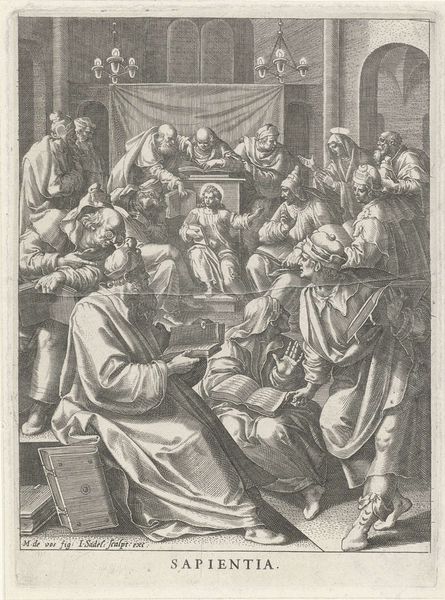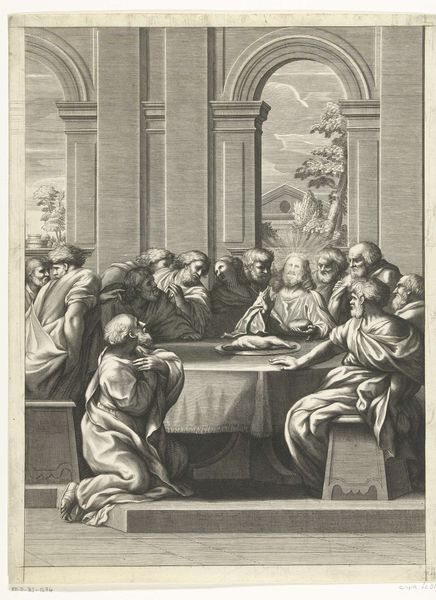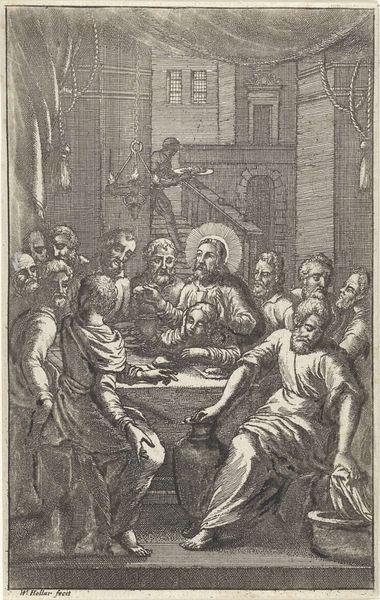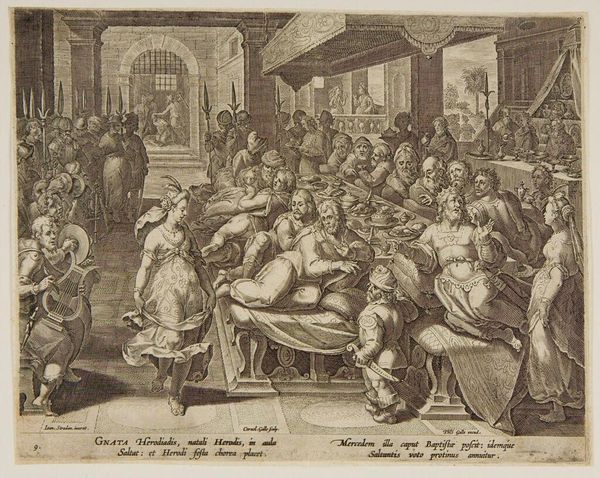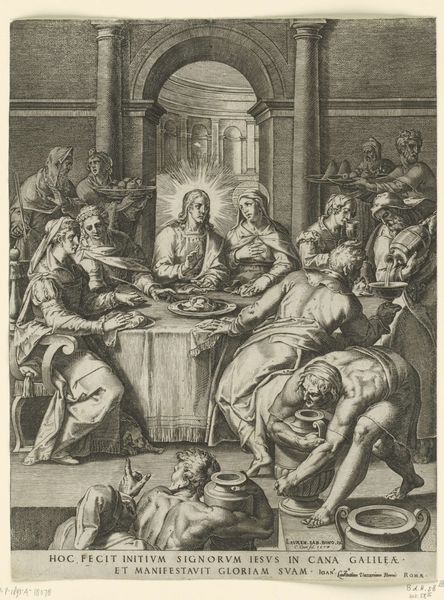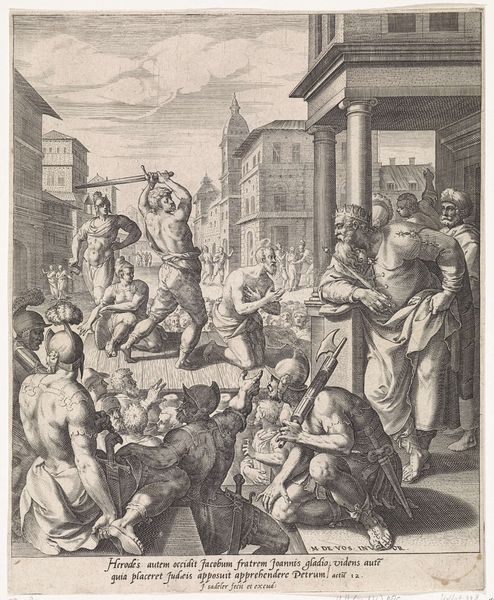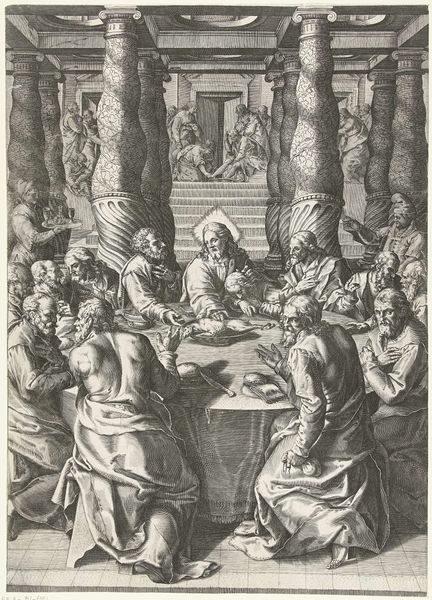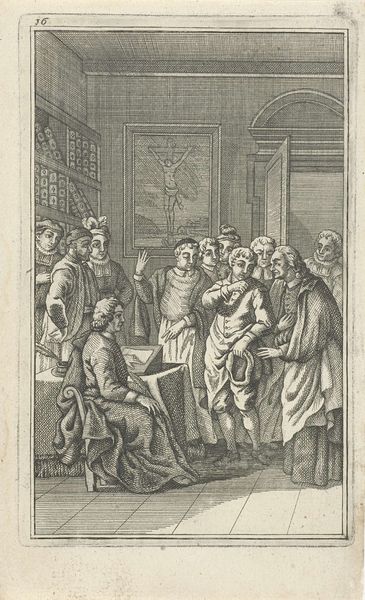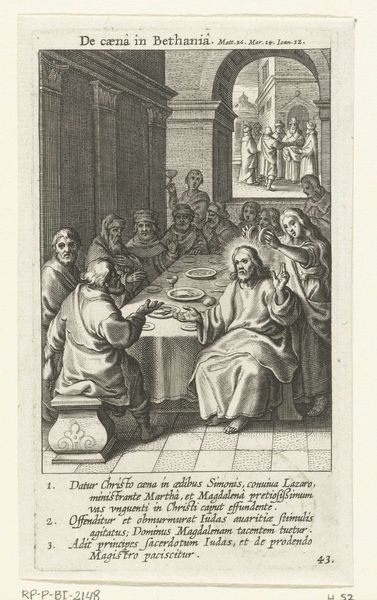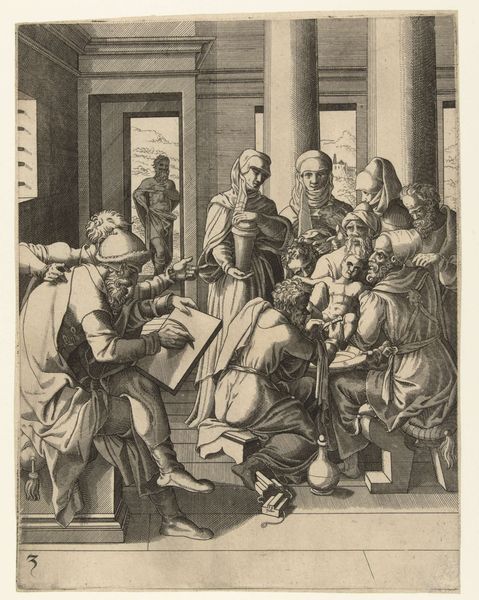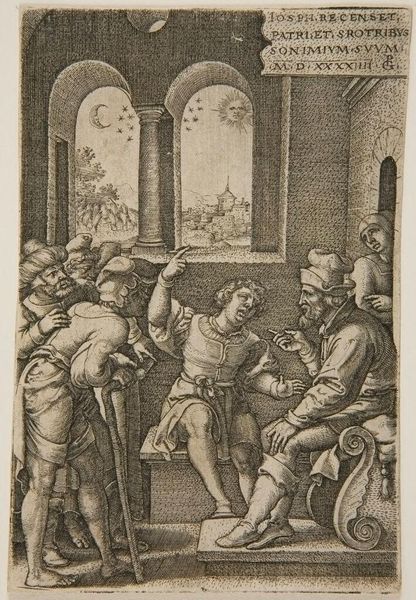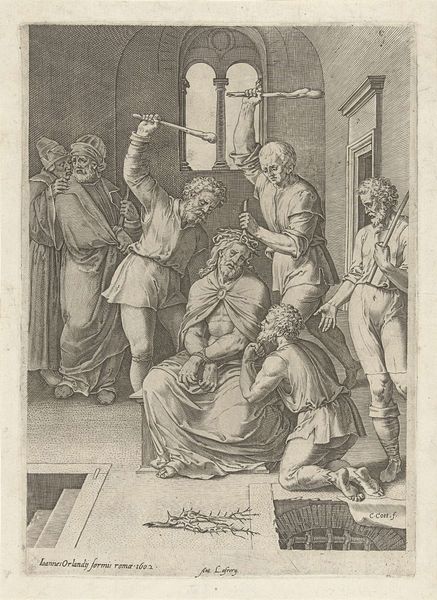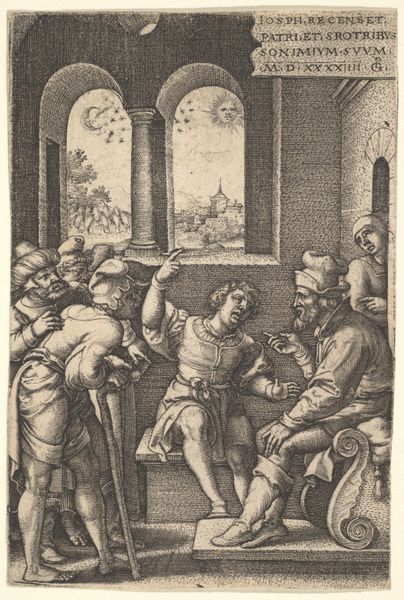
print, engraving
#
narrative-art
#
baroque
# print
#
old engraving style
#
caricature
#
figuration
#
line
#
history-painting
#
northern-renaissance
#
engraving
#
realism
Dimensions: height 236 mm, width 171 mm
Copyright: Rijks Museum: Open Domain
Curator: Here at the Rijksmuseum, we have Jacob Matham's engraving, "The Prodigal Son Demands his Inheritance," created sometime between 1592 and 1656. Editor: It's striking how the line work creates such dramatic tension. The artist captured a real turning point, didn't they? The sharp angles feel… decisive, almost brutal. Curator: Absolutely. This print offers a glimpse into 17th-century Dutch society's understanding of wealth and family. Look at the varied clothing, signifying different social positions and levels of access. The act of inheritance itself was, of course, a complex negotiation between customary laws, economic conditions, and familial power dynamics. Editor: True, but even within that context, it is all about form. The play of light and shadow directs your gaze. Consider how the figures are arranged around that central table; they all funnel your attention right to the coins being counted! The formal qualities highlight greed and impatience so clearly. Curator: The story it conveys cannot be dismissed. This scene wasn't merely a transaction, but rather a moment deeply entwined with moral considerations and the impact on his family and the servants in the background. Editor: Semiotically speaking, though, objects become potent symbols. That heavy strongbox and even the coins suggest the young man’s delusion of value. He misinterprets the object, thinking material possession will bring happiness, foreshadowing his downfall, isn’t it obvious? Curator: Agreed. Through Matham’s skills with printmaking, this narrative speaks across time about the seductive yet dangerous allure of easy wealth, the tension between the father’s wealth and his children needs and ultimately, a societal critique of consumption. Editor: It certainly is. Examining how these linear structures underscore inherent narrative meanings can itself illuminate the emotional core and message Matham wanted to convey.
Comments
No comments
Be the first to comment and join the conversation on the ultimate creative platform.
